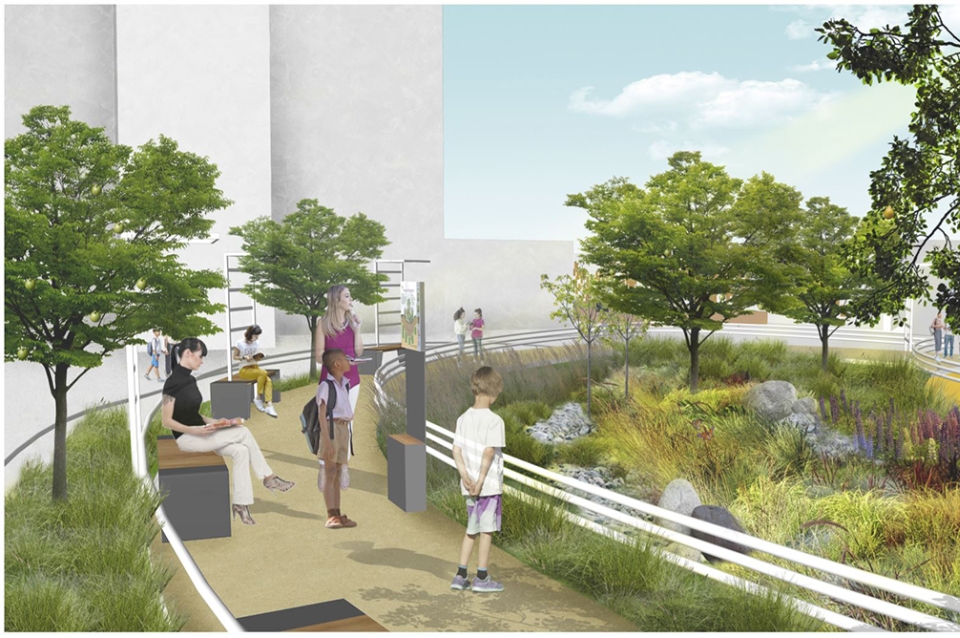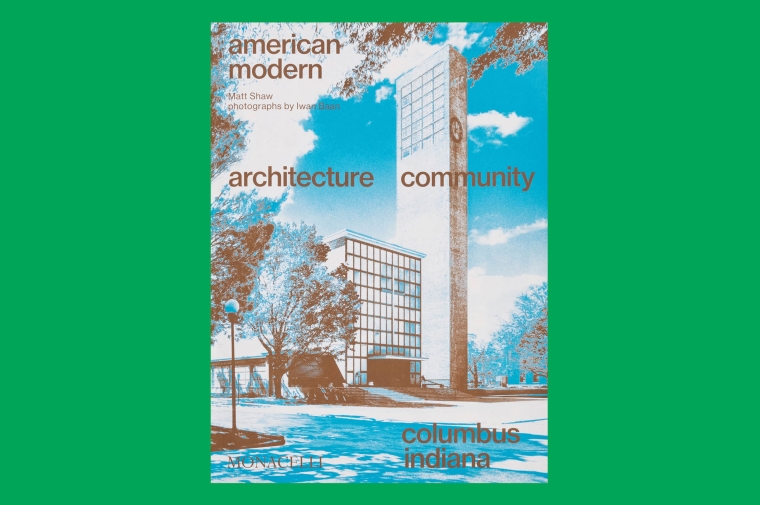April 23, 2021
Stuart Weitzman School of Design
102 Meyerson Hall
210 South 34th Street
Philadelphia, PA 19104
Get the latest Weitzman news in your Inbox
Media Contact
Michael Grant
mrgrant@design.upenn.edu
215.898.2539
Each year, the Environmental Protection Agency issues a “Campus RainWorks Challenge,” which asks college students around the U.S. to design a green infrastructure project to both manage stormwater and provide additional benefits to people in the surrounding community. And for Corey Wills, the 2020 competition was the right project at the right time. A student in the Master of City Planning program at Weitzman and the Master of Environmental Studies program at the School of Arts and Sciences, as well as a watershed resource analyst with The Water Center at Penn and an environmental equity fellow with the Netter Center for Community Partnerships, Wills is focused on how infrastructure can build resilience in underserved communities.
“I’m very, very interested in that intersection between the built environment, the natural environment, and social equity,” she says.
Though the RainWorks Challenge is in its ninth year, there had never been a University of Pennsylvania entry before, says Wills. Last year, she says, the chair of environmental studies encouraged her to put a team together and submit a demonstration project to the contest. Wills began posting on Canvas pages and communications channels for different departments, figuring she’d hear from a few students who were interested in pitching in. Instead, a team of around a dozen students from the Weitzman School, the School of Arts and Sciences, and the Wharton School began planning together on Friday mornings.
“There’s no upper limit on who can participate, so I figured, the more the merrier,” Wills says. “It’s a great opportunity for students to work on a real-world project and get involved in their community.”
Rather than working directly on Penn’s campus, the group, in collaboration with the Netter Center for Community Partnerships, chose to work with the Philadelphia School District to design a green stormwater intervention at the Andrew Hamilton School in West Philadelphia. The K-8 school was well-suited for an intervention for a number of reasons, Wills says: It’s in a high-poverty neighborhood, a food desert, a high-heat zone, and an environmental justice area, and it also lies within the impaired Cobbs Creek Watershed, which sends stormwater runoff downstream to the already flood-prone neighborhood of Eastwick. The School District had been planning to install a detention basin beneath the parking lot to meet some on-site stormwater management requirements. The team of students came up with an alternate plan that responds to the EPA Challenge to “integrate natural processes” into the design, provides fresh food and learning opportunities to the Andrew Hamilton student body and the surrounding community, and reduces monthly stormwater fees for the school in the process. The design incorporates rain gardens, raised beds for urban agriculture, and a food forest with native species where students can learn how to grow and prepare their own food while learning about food sovereignty and environmental justice. The design will also act as a vehicle for environmental education, providing STEM learning opportunities for students. Additionally, produce from the raised beds will be distributed to low-income community members at a weekly farm stand, giving students an opportunity to learn entrepreneurial skills.
Mrinalini Verma, a student in the Master of Landscape Architecture and Environmental Building and Design programs, thought the EPA challenge would be a good way to apply the water-treatment methods she had been researching in her courses, through PennPraxis research, and through a Water Center research grant. It was an opportunity to collaborate with students in other disciplines as well, she says.
“The model that we wanted to carry forward is that Penn students can work with these different schools that Penn is engaged with to solve issues around stormwater management and water inequities as well,” Mrinalini says. “It’s a unique opportunity to engage with the community as well, to understand their ideas and try to incorporate it in our designs.”
Mrinalini became responsible for creating designs and renderings for the project, and is now helping out with fundraising applications. Earlier this month, the EPA announced that the Penn team won 1st place in the Demonstration Project category of the RainWorks challenge, and awarded a total of $10,000 to the students and their faculty advisor, John Miller, a lecturer in the Master of Environmental Studies program. As far as the contest goes, that could have been the end of it. But a few weeks ago, the group also registered to create an official Penn RainWorks club, hoping that future teams of interdisciplinary students will enter the EPA contest as well. And the students have agreed to put some of their prize money into building the project this summer—and have raised more than $100,000 in addition to help realize it, going beyond the parameters of the EPA prompt.
“The design was intended to just be conceptual,” Wills says. “There’s no implementation requirement for the competition. But since we got buy-in from the community, from the Water Department, from the School District and from two nonprofits that we’re working with, we were able to get the project off the ground. It will actually be implemented.”
Along with Verma, Wills’ teammates include Leila Bahrami, Haoge Xu, Justina Thompson, August Sissick, Noëlle Raezer Flavia Olivera, Eliza Nobles, Jonah Garnick, Prithi Chandra, and Caroline Ben Nathan. Their faculty advisor was John Miller, a lecturer in the MES program.
A video documents the Andrew Hamilton School project.


 Expand Image
Expand Image



